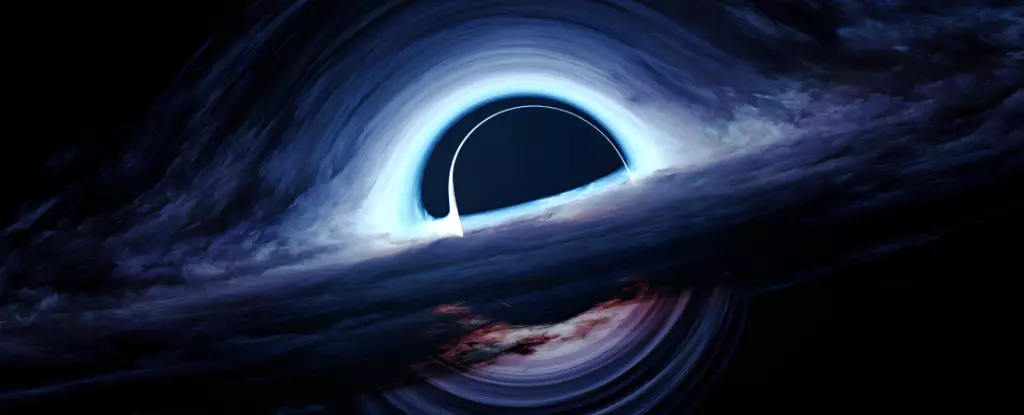Supermassive black holes (SMBHs) are among the most captivating—and at times, terrifying—phenomena in the cosmos. These colossal entities can weigh in at around one billion times the mass of our Sun, challenging our understanding of astrophysics and the evolution of the universe. As we delve into the mysteries surrounding these celestial giants, it becomes apparent that their existence is deeply intertwined with the very formation and evolution of galaxies.
Evidence suggests that SMBHs have been present since the universe was quite young, appearing less than one billion years after the Big Bang. This observation highlights a profound mystery: how could such massive entities arise so swiftly in cosmic terms? Astronomers have identified quasars—intensely luminous objects thought to be powered by SMBHs—at this early stage of the universe, raising questions about the mechanisms behind their rapid growth. Accretion, the process by which black holes consume surrounding matter, is a significant factor. As material is drawn towards a black hole, it heats up and emits radiation, which acts as a limiting factor in growth. This presents a paradox for early SMBHs; they must have either grown at an impossibly fast rate or originated from unexpectedly large seeds.
Several theories attempt to explain the formation of such massive black holes. One prominent idea involves primordial black holes, which may have formed shortly following the Big Bang. While this concept could account for smaller black holes, it struggles to explain the large masses of early SMBHs based on the standard cosmological model. Another credible path to SMBH formation comes from stellar mass black holes, which emerge from the catastrophic deaths of massive stars. These stellar remnants can grow rapidly in environments where stars are densely clustered, potentially leading to the merging of multiple black holes.
An alternative yet fascinating explanation for the formation of massive black holes could be found in “heavy seeds”—black holes that originated from direct collapse scenarios facilitated by dark matter. In this model, dense clouds of gas, shaped by dark matter, collapse under gravity, avoiding the typical stellar formation processes. Crucially, this scenario hinges on the availability of sufficient dark matter within these halos, suggesting that early black hole formation could have been a rare phenomenon.
Revolutionizing Our Understanding Through Observations
Historically, determining the number of black holes in the early universe has been an arduous task, largely limited to identifying luminous quasars. However, recent advancements have transformed our ability to monitor black hole activity. By tracking brightness variations in some of these ancient galaxies over a 15-year period, researchers discovered a higher prevalence of black holes than previously estimated. This revelation was corroborated by cutting-edge observations from the James Webb Space Telescope (JWST), suggesting that the population of early black holes is notably greater than what could be accounted for by traditional formation models.
In a groundbreaking twist, studies indicate that not only do numerous black holes exist, but their formation mechanisms might be more diverse and exotic than imagined. The ideas surrounding “dark stars,” for instance, propose that stars could grow indefinitely if they captured ample dark matter during their formation, ultimately collapsing into massive black holes when gravity overwhelms all else.
The field of early black hole research is in a dynamic state of evolution, particularly in light of the advanced telescopes and observatories planned for the near future. Missions such as the Euclid Space Telescope and the Nancy Grace Roman Space Telescope are poised to significantly refine our understanding of early black hole populations through enhanced observations of faint quasars. Additionally, upcoming projects like the NewAthena mission and the Square Kilometer Array in South Africa and Australia will provide unprecedented insights into the nature and processes surrounding black hole formation.
In the immediate term, the JWST remains at the forefront of exploration, with its advanced capabilities equipped to detect and monitor the faint signals of nascent black holes. As we forge ahead, the potential to witness the birth of black holes and the dynamic processes involved stands within reach, propelled by collective ambition within the astronomical community.
As we unravel the complexities surrounding supermassive black holes, we are constantly reminded that our understanding of the universe is still in its infancy. Every discovery opens new questions and challenges long-held theories. The cosmic ballet of black holes, star formation, and dark matter continues to inspire awe and curiosity—pushing us to explore the universe’s most profound mysteries. The quest to uncover the true nature of these enigmatic giants has just begun, and the coming years promise to unveil an array of revelations about the cosmic forces at play in our universe.


Leave a Reply